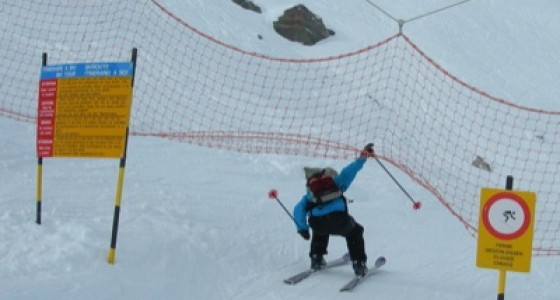
How many of us have ever ducked a rope at the local ski area looking for “freshies”? By ducking that rope you have now left the ski area and are essentially on your own. You are in an area that is not controlled or patrolled by ski patrol, just like the backcountry. If you become injured or are swept up in an avalanche it’s up to you to extricate yourself.
While it’s difficult to discern its origin, the term sidecountry is likely a marketer’s brainchild. And there are similar terms, such as “slackcountry,” “backcountry-lite,” and others that have been added to skiers’ and snowboarders’ vernacular in recent years. The appeal of these terms is obvious: If you’re an intermediate to advanced skier or snowboarder who is curious about backcountry skiing, then taking a run down an area perceived as sidecountry would be a logical first step. Meanwhile, consumer ski and snowboard magazines, websites, and social media outlets implore their readers to “Ski the Sidecountry” – all while appearing to suggest that all that’s needed to do so is a pair of the latest powder skis or a new snowboard. Yet what‘s left unsaid is that this so-called sidecountry carries with it the same inherent risks and dangers as the remote backcountry.
These terms seem to imply that some portions of backcountry are kinder and gentler than other areas. Yet those with their boots to the ground know that generally speaking, there are only two places for which to ski and/or snowboard: within a ski area’s operating boundary and outside of the ski area’s operating boundary. And just because it’s terrain that lies adjacent to the boundary, and can be accessed via chairlift, does not mean that the forces of nature are any less severe. Indeed, avalanche risks are inherent to the sport both within and beyond a ski area’s boundary.
Nationally, last season there were seven fatalities that occurred in backcountry terrain accessed from a ski area, according to the Colorado Avalanche Information Center. Three similar fatalities occurred during the 2010/11 season, and 49 such incidents have occurred since the 1999/98 season.
So next time you leave the boundaries of a ski are you are now in the backcountry, not the sidecountry, you are responsible for yourself and others in your party if you are accompanied by friends. Know the risks of the terrain, have the tools to assess the dangers, know how to find someone if they are caught in a slide. If you do not have this knowledge it may be better to stay inside the ropes, and stay safe.